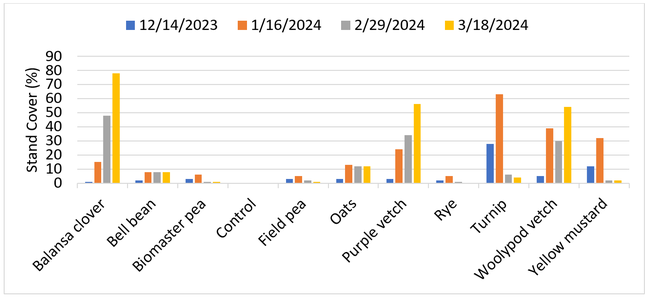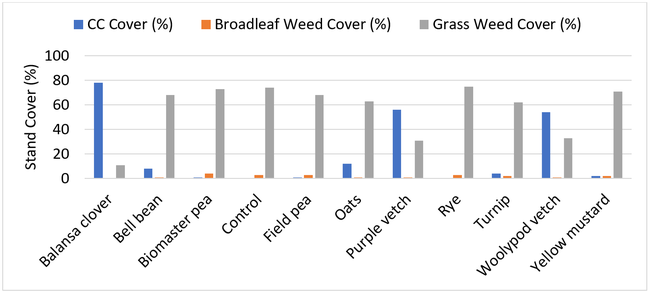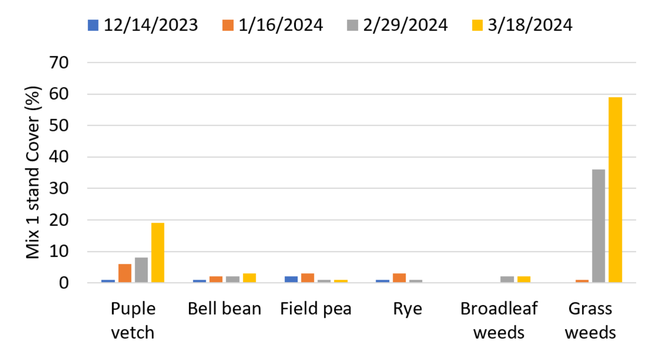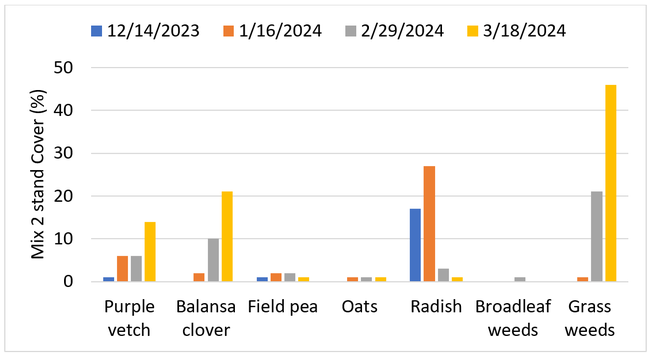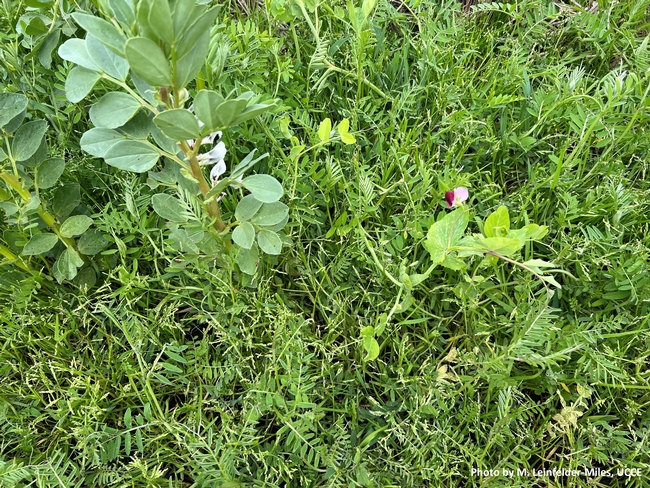With funding from the CDFA Healthy Soils Program and CA Rice Research Board, we are evaluating how well different cover crop species establish, provide soil coverage, affect soil carbon and nitrogen dynamics, and/or impact rice yield in subsequent growing seasons. Since rice may be grown over multiple seasons without rotation, cover crops may provide an opportunity to introduce plant diversity, including nitrogen-fixing legumes. Other potential benefits include increasing soil organic matter, reducing nitrogen loss in the winter, reducing nitrogen inputs during the rice season, and improving rice straw decomposition. While evaluating winter cover crops in the rice system is the primary purpose of the trial, the project has relevance for other annual systems where winter cover cropping may be employed.
This article describes one of the three trial locations, which was on Staten Island in the San Joaquin Delta Region. We planted the cover crops on November 13th by hand-broadcasting seed over 200-ft2 plots and then gently raking it in. We planted 10 single species and two mixes (Tables 1-2). Each treatment was replicated four times, and the graphs below illustrate cover crop stands over the season (Figs. 1-4).
Table 1. Cover crop species and seeding rates. Table 2. Cover crop mixes and seeding rates.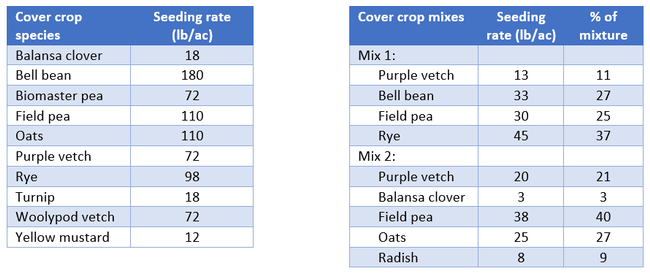
- Timing of operations is critical. Growers should strive to plant winter cover crops as early as conditions allow (e.g. early to mid-November). Drill seeding is more effective (i.e. better stand establishment) than flying on and harrowing in seed.
- Stand establishment is impacted by conditions outside the control of the manager (i.e. weather, herbivory). If neighboring fields will be winter-flooded, having drainage ditches between fields will help cover crop growth.
